List with Roman Goddess names and facts. A curated list of famous Roman Goddesses and female deities from Ancient Rome, essential facts + where to see their temples, statues and place of worship.
The ancient Roman pantheon counted many female Gods, overlooking fundamental aspects of human life.
Some of these Goddesses came to Rome from Greece and had much in common with their Greek counterparts.
Others are quintessentially Roman. Others again mix elements from Greece with aspects that root them into Italic land and archaic beliefs from Sabine and Etruscan cultures.
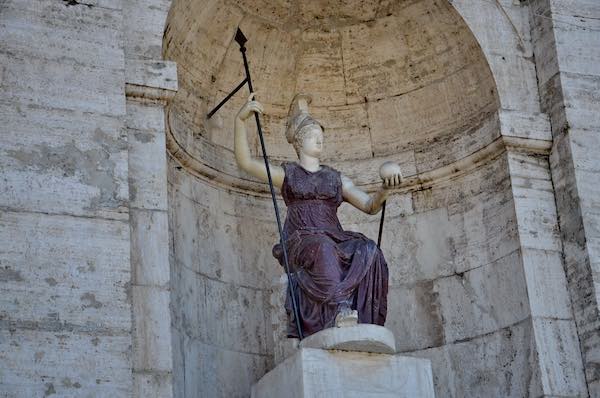
Today, we share a list of the most famous Roman goddesses with elements of their legends and powers.
We also share the locations in Rome where you can still admire their temples, statues and altars, whenever still in existence.
When possible, we also added the name of the main pagan festival in their honor and the time of the year when it would take place.
Some of these names may be familiar to you thanks to famous Roman legends and modern female names of Roman origins.
Others are maybe a little less known.
We included all those we believe you may want to know while visiting Rome, because of the archaeological findings and important statues in Rome still commemorating them.
Roman Goddess names list
| Name Latin / Greek Equivalent | Roman Goddess of |
| Juno / Hera | Female principle, protector of married women and birthing mothers |
| Minerva / Athena | Wisdom, handicrafts, intelligence. Later: war |
| Venus / Aphrodites | Love, beauty |
| Diana / Artemis | Woodlands, animals, feral life, birthing mothers |
| Vesta | Homelife, family |
| Bellona | Roman Goddess of war |
| Ceres /Demetra | Roman Goddess of harvest and agriculture |
| Magna Mater / Cybeles | Female Goddess of fertility and Abundance |
| Isis | Goddess of Egyptian Origin, Goddess of fertility and abundance |
| Flora | Roman Goddess of flowers and edible plants |
| Fortuna / Tyche | Roman Goddess of Fortune |
| Spes | Personification of Hope |
| Opi /Rhea | Roman Goddess of prosperity |
| Luna / Selene | Personification of the Moon |
| Victoria /Nike | Roman Goddess of Victory |
| Bona Dea | Roman goddess of Chastity and fertility |
Juno – female universal principle, mother Goddess
Juno (In latin: Juno, Junonis) is one of the most powerful Goddesses of the ancient Roman pantheon.
Associated with the Greek Goddess Hera, she is a celestial Goddess and represent the female universal principle, balancing out her bother and husband Jupiter, the male principle.
Daughter of Saturn and Opi and mother of Mars, she looks over the well being of women, especially married ones, and expectant mothers, who invoke her a sort of ‘guardian angel’ under the name “Juno Lucina”.
Her sacred animal is the peacock.
Juno was worshipped in many forms and locations in Rome.
As part of the Capitoline Triad, she was worshipped on the Capitoline Hill with Jupiter and Minerva, within the temple to Jupiter Optimus Maximus.
This temple dates from the time of the Tarquinii Roman Kings and doesn’t exist, as such, any longer.
However, archaeologists have identifies its foundations, which we can now see in the main exedra of the Capitoline Museums.
As Juno Lucina, goddess of childbirth, she had a temple on the Esquiline (no trace of it survives).
As Juno Moneta (‘the Warner’), she has a temple on the northern part of the Capitoline Hill, famously guarded by a cackle of geese, at the center of one of Rome’s most famous legends.
Little remains of her temple; however, Juno Moneta’s temple on the Capitoline Hill left and indelible mark on language.
Beside it, the first monetary mint was born: the name ‘moneta’ (Italian for coin) and the English ‘money’ both come from her name and help the memory of this original connection.
Juno is usually represented as a matron with a severe expression. A stunning head of Juno is in beautiful Palazzo Altemps, one of the seats of the Roman National Museum.
Minerva – Roman Goddess of wisdom, intelligence and handicrafts
Minerva is one of the most ancient female ancient Roman Goddesses and one whose statues you often still encounter while in Rome.
Associated with her Greek counterpart Athena, she is part of the Capitoline Triad with Jupiter Optimus Maximus and Juno and probably entered the Roman pantheon at the time of the Tarquinii (VIII century AD).
In origin, Minerva was most likely an Etruscan Goddess overlooking manual arts and entrepreneurship; however, after the identification with Athena, she also became the Goddess of intelligence, wisdom and doing.
Her iconography is a fully armed woman with a helmet, a shield and a spire. Legend wants her born, fully armed, from Jupiters’ (Zeus) head.

Her festivities fell on the 19th March (Quinquatrie) and lasted 5 days, during which artists of all types would gather and celebrare.
There are several statues of Minerva we can still admire in Rome and several Rome locations that maintain memory of her places of worship.
The most impressive ancient statue of Minerva is probably the one in the Capitoline Museum: Statua di Minerva is a colossal piece of sculpture from the II century BC, probably originally part of a large temple.
Another statue of Minerva is on top of the Capitoline Hill and acmuch more modern sculpture of the Goddess is the certerpiece of Rome’s main University Campus.
Some columns of the Temple of Minerva are still standing in Nerva’s Forum (‘colonnacce’)
Worth noticing is that Minerva gets a mention even in locations not originally associated with her.
The so-called Temple of Minerva Medica, for instance, is not a temple to this Goddess but rather a nympheeum from the imperial area.
Pretty Piazza della Minerva and the church of Santa Maria Sopta Minerva also take their name from a mis-interpretation of archaeologic findings, wrongly attributed to a temple to Minerva instead of one to Isis (see below).
Venus – Roman Goddess of Love
Venus is one of the most famous and most important Goddesses of Ancient Rome.
Associated with the Greek Goddess Aphrodite, Venus is not only the mighty Goddess of love and its generating power but is also a Goddess with a special link to the city of Rome.
Mother of Aeneas, she is the divine ancestor of Romulus, founder of Rome and, therefore, the divine power supporting and justifying the power of the city.
Venus plays a central part in the growth of Rome and crucial figures in Roman history paid special tribute to her, by building imposing temples that would signify the connection between them and the Goddess.
The most impressive of all is probably the Temple of Venus and Rome in front of the Colosseum.
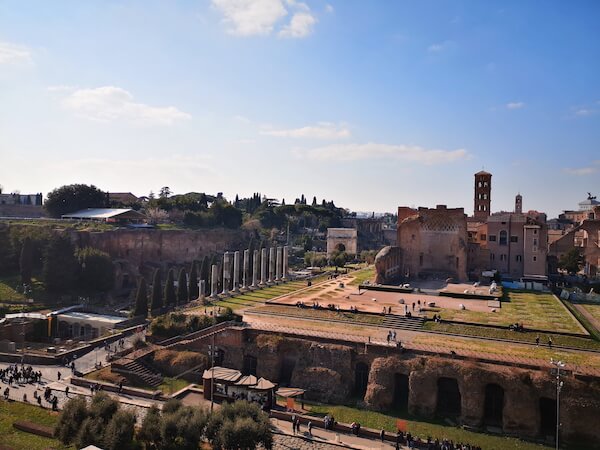
Wanted by Emperor Hadrian in the II century AD, the temple has been recently restored by Parco Colosseo and Maison Fendi and it is a beautiful and imposing piece of ancient Roman architecture.
More ancient is another temple of Venus in the Forum of Caesar, the Temple of Venus Genitrix (Genitrix = who generates, parent).
Only a few columns remain but archaeolgists gave been able to identify its exact location and shape.
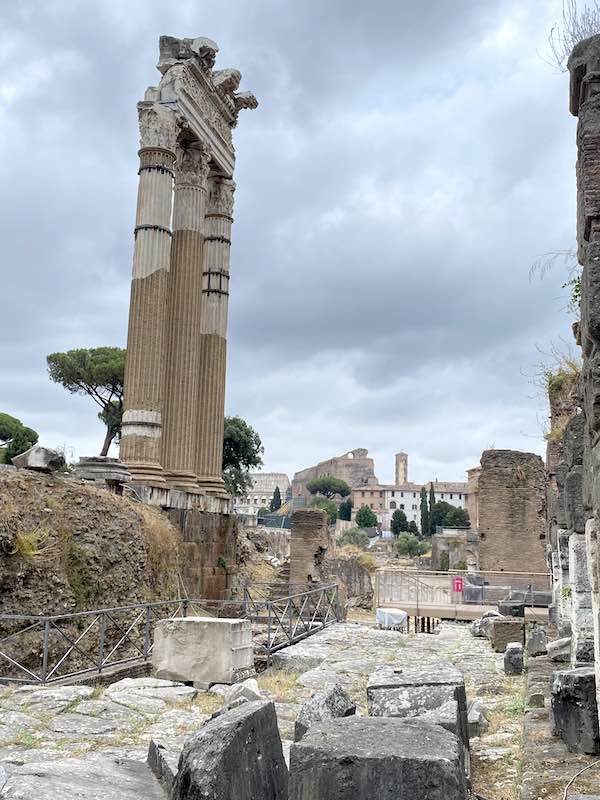
In terms of status, a stunning statue of Venus is in the Capitoline Museums: Venus Capitolina (Venere Capitolina).
Venus is usually represented as a nude, stunning, voluptuous woman.
Her festival, Veneralia, took place at the beginning of April, the same month as Rome’s birthday.
In Greek and Roman mythology, she was born from the sea foam of the Aegean Sea and originally married Vulcan, God of Fire.
In line with her generating powers, she isn other to many deities and heroes, generate with divine and mortal partners.
Diana – Roman Goddess of feral life, nature and hunting
Diana is a Roman Goddess overlooking and protecting the woodlands, animals and the feral world.
A female deity, Diana would also protect birthing mothers, who would turn to her in the form of Diana Lucina (see also Juno above)
Most commonly represented as a young, slender girl with a bow and arrows, she is associated with the Greek Goddess Artemis; however, she seems to be of Italic origins.
Her places of worship were outdoor, natural places such as the sacred woods near Lake Nemi.
In Rome, she had a temple on the Aventine Hill. Her main festival, Nemoralia, happened in August.
Vesta – ancient Roman Goddess of domestic life
Vesta is one of the most ancient Goddesses in Rome and she overlooks family and domestic life.
Her temple stood in the Roman Forum and had an ever burning fire guarded by 12 virgin vestals who lived in the nearby House of Vestals, still visible in the Roman Forum.
The temple seems to date to the time of the Second King of Rome, Numa Pompilius and had a peculiar round structure.
Vesta was the daughter of Chronos and Opi, sister to Jupiter and Juno. Her festival, Vestalia, happened in June.
Need to know:a round temple in Campo Marzio is often referred to as ‘Vesta’s Temple’. Despite being round, just like the actual temple of Vesta, this other temple is not dedicated to the Goddess but rather to Hercules.
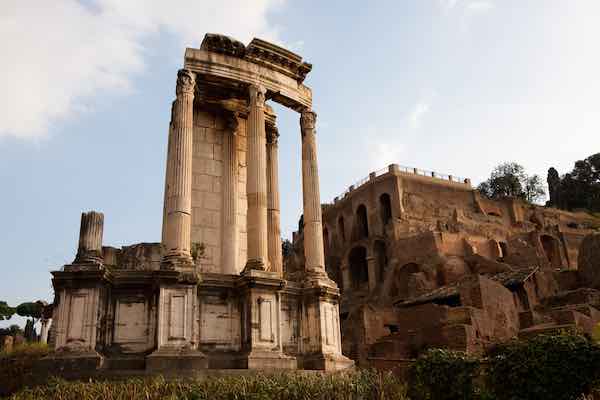
Bellona – Roman Goddess of War
Bellona is the Roman Goddess of war (vellum = war, in Latin).
Bellona is a very ancient Goddess probably of Sabine origins: she looked over war endeavour at a time when the God Mars was still associated with agriculture, rather than war.
Ancient sources tell us King Ancus Marcius ordered a temple for her in the Campo Marzio, beside what is now Marcellus’ Theater.
Outside her temple stood a columna bellica, a columned used a ceremonial location for declarations of war.
Bellona’s festival happened in early June.
Ceres Goddess of agriculture and harvest
Ceres is an ancient Italian goddess of earth and agricultural abundance, later associated with the Greek Goddess Demetra.
Ancient sources tell us she had a temple on the Aventine Hill with two other deities: Libero and Libera, herself a nature Goddess.
The goddess overlooked the passing of the seasons and the alternating of winter and spring.
Her myth is strongly associated with that of her daughter Proserpina, taken by Pluto to the underworld and only given back to her mother for six months of the year.
A beautiful statue of Ceres is now in Museo Pietro Canonica in the Borghese Gardens and the Borghese Gallery also houses a statue that recalls the deity.
The Ceres of the Borghese Gallery, however, is probably not originally a sculpture of the goddess. More likely, it was a portrait of a woman presented in the guise of Ceres.
Her festival, Cerealia, happened in April.
Magna Mater Goddess personification the creative forces of Nature
Originally arrived in Rome from Crete and Asia Minor, Magna Mater is the Goddess of crops and seeds and the personification of the creative force of Nature.
Associated with the Greek goddess Cybele’s, Magna Mater has an impotent temple on the Palatine, dating from the III century BC. Her festival happened in April.
A large statue of her is now in the beautiful Palatine Museum.
Isis – celestial Goddess
Isis is and Egyptian Goddess who became exceptionally popular in Rome from the I century BC, when Egypt became Roman province.
Isis was a celestial Goddess, associated with the moon, and we know of several places of workshops in the city of Rome.
On the Esquiline Hill we can still see part of her ancient temple, and we also have a massive estate of Isis in Piazza Venezia, usually called ‘Madama Lucrezia’, one of Rome’s talking statues.
The church of Santa Maria Sopra Minerva is on what used to be a temple to Isis.
The name ‘St Mary Above Minerva’ keeps the memory of a misinterpretation of the preexisting temple, wrongly believed to be devoted to Minerva.
Her Festival happened in August.
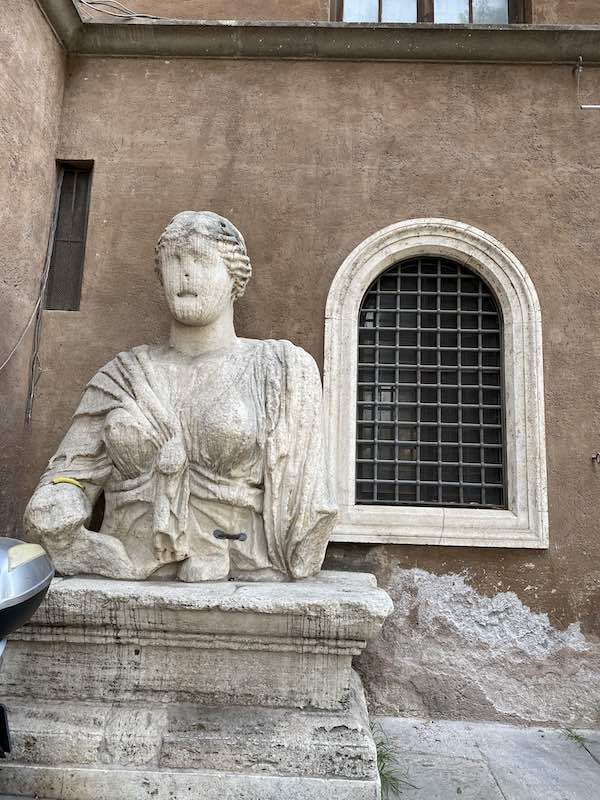
Flora – Roman Goddess of flowers and edible plants
Flora is the ancient Roman goddess of flowers and edible plants.
Celebrated during the Floralia, she is Goddess of Italic origins and used to have several temples in Rome. she is usually reprehend as a beautiful woman carrying flowers in her hands.
Her festival was called Floralia and took place in April.
Fortuna – Roman Goddess of Fortune
Fortna is the Roman goddess of italic origin, later identified with the greek Tyche, Goddess of Fortune.
The Romans worshipped her as Fors Fortuna in several guides and places, including a ‘chapel’ on the River Tiber
Spes – Roman Goddess of Hope
Spes is the personification of hope and came to Rome from Greek mythology.
In Latin, she is usually mentioned as ultima dea ‘last Goddess’ not in terms of her important but in terms of being the last one invoked by people in need.
Her myth is connected to that of Pandora, who opened her vase and let everything out except Spes, who remained as gift to mortals.
In Rome, her temple was in the Olitorium Forum and archaeologists found several coins with her image.
Luna – Roman Goddess of the Lunar disk
Luna is the Ancient Roman Goodness embodying the Moon and more precisely, the lunar disc.
She is most often represented as a beautiful woman with a moons crescent on her head, worn as a sort of tiara. Her Greek equivalent was Goddess Selene.
Opi – Roman Goddess of prosperity
Opi (or Ops) is a very ancient Roman Goddess, associated with the Greek equivalent Rhea.
Wife to Saturn and mother of Juno, she is the matron of riches, abundance, and prosperity.
Her temple was on the Capitoline Hill. She is usually represented as a woman sitting down with a cornucopia and scepter.
Her festival, Opiconsivia, happened in August.
Victoria – Roman Goddess of Victory
Victoria is Roman Goddess of Victory. She is one of the several Roman deities embodying concepts – others would be Juventas (youth), Aequitas (justice, fairness), Aurora (dawn) etc, just to name the best known.
Victoria is the equivalent to the Greek Goddess Nike and, like her, she is often represented as a woman, standing tall, with wings.
Bona Dea
Bona Dea is a very ancient Roman Goddess worshipped by women. She overlooked chastity, fertility and had prophetic powers.
Her temple was on the Aventine Hill and her cult dictated not to utter her name.
Her festival was celebrated at the beginning of May and then again at the start of December.
Ancient sources about Roman Goddess Names + legends
- Ovid – Fasti
- Varro, Divine Antiquities
- Varro, De re rustica
- Ennius, Annales
